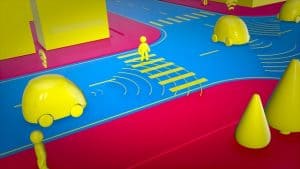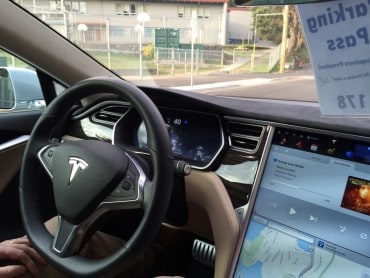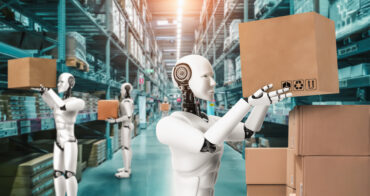
Autos may be the ultimate edge devices. They are geographically dispersed and provide real-time streaming data, while enabling autonomous actions.
Nowhere is the edge more edgy than the automotive sector. From connected cars to connected factories to connected people, edge is changing the way autos are made – and driven. There is an increasing proliferation of networked vehicles, as well as edge systems tied to networks of sensors within auto manufacturing operations. In the process, there has been a growing convergence between the tech and automotive sectors.
See also: MIT Develops Autonomous Sensing System, Using Shadows
For example, in 2015, the BMW Group began using AWS for its new connected-car application that collects sensor data from BMW 7 Series cars to give drivers dynamically updated map information. BMW built its new car-as-a-sensor (CARASSO) service with Amazon Web Services technology, “By running on AWS, CARASSO can adapt to rapidly changing load requirements that can scale up and down by two orders of magnitude within 24 hours.” The technology was eventually expected to process data collected by a fleet of 100,000 vehicles traveling more than five billion miles.
Helping to lead the way is the Automotive Edge Computing Consortium (AECC), which brings together both leading auto and tech companies. “We clearly see the market demand and the market requirements for connected and autonomous vehicles will accelerate demands for extra computing right to the edge of the network,” Geng Wu, Intel Fellow and Chief Technologist for wireless standards in the Platform Engineering Group at Intel Corporation, said in a recent interview.
AECC researchers recently issued three forecasts for developments at the edge over the next five years:
- Connected vehicles will generate around $150 billion in annual revenue.
- The number of connected vehicles will grow to about 100 million globally.
- The data volume transmitted between vehicles and the cloud will be about 100 petabytes per month.
These are all made possible by edge computing, ensuring that “the network infrastructure can be utilized to improve the characteristics of the indicated services, including the realization of real-time application response through a low-latency network environment and distributed computing.”
However, there’s still a lot of work to be done, the report cautions. “We believe that the current mobile communication network architectures and cloud computing systems are not fully optimized to handle the requirements of connected vehicles effectively. Therefore, it is beneficial to investigate how to redesign the system architecture and reconsider network deployments to better accommodate network traffic.”
The AECC researchers advise deploying “topology-aware computing and storage resources” to increase connected vehicles’ efficiency. The researchers predict the following types of services that will emerge:
- Intelligent driving: This involves “the creation of maps with real-time data and driving assistance based on cloud computing, require vehicles to be connected to the cloud and networks to facilitate the transfer of a large amount of data among vehicles and between vehicles and the cloud.”
- Mobility as a Service. The mobility data gathered “can be used by third parties to offer new services; one example being traffic flow control by road authorities. This encompasses services such as mobility sharing, “is a service that includes ride-sharing, car-sharing, and even parking lot sharing,” or multimodal navigation services, which are “end-to-end route guidance that uses various modes of transportation.” These types of services “should be built on top of intelligent driving, high-definition maps and cruise assist.”
- Finance and insurance: Data generated from connected cars offers insurance companies opportunities to get closer to customers. “Auto insurers are adopting the usage-based-insurance model by monitoring driving habits, including driving behavior, how often people drive and the times of day during which they drive,” the report states. “By doing so, insurers will be able to better assess the customer’s risk level, which will lead to a more reasonable cost for the insurers. In a future world where real-time information can be provided to users, real-time dynamic insurance premiums will be a possible product. Data gathered from both the vehicle, such as cruising data, and the driver’s condition is processed and is delivered back to the users in the form of insurance premium information in real-time.”
- Artificial intelligence: “AI technologies such as machine learning will implement required intelligence capabilities to support autonomous driving, cruising assist, creation of high-definition map information, etc., which requires big data and highly intelligent analysis. Our focus will be on technologies enabling such AI-driven services in distributed computing with localized networks.”
- Radio Access Technologies. “Wireless technologies will connect a vehicle with distributed computing platforms with more flexibility in quality and cost. This includes not only cellular technologies but also local radio access such as Wi-Fi and low-power wide-area (LPWA).”
In many ways, automobiles may be the ultimate edge devices, dispersed among large groups of consumers and businesses, providing real-time data as a continuous stream, while supporting processes enabling autonomous actions and reactions.







